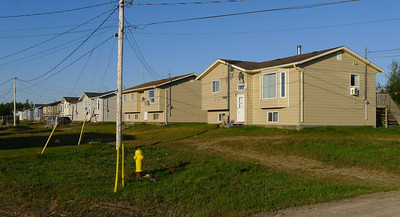You're making the mistake again in thinking that UK weather is somehow extreme relative to large parts of the rest of the world.
I have to counter this and point out that the UK faces weather unique to only two places in the world. The UK (or rather the west shores of Europe) and the north west unitied status and canada.
People always wonder why the UK is obsessed with it's weather as if there was no reason to be. This is not true.
Being on the Eastern shore of an ocean presents unique weather in the Northern Hemisphere. The Eastern shores of the Atlantic in particular present unique weather due to the combination of the jet stream, artic cell and gulf stream and how they interact.
If you watch this you will note that constantly, all year round, the heat of the gulf stream creates energetic weather which runs up off the east coast of the US, gets picked up the jet stream, bumped up against the artic cell and spun up into Atlantic depressions which then slam into the UK. We get these every few weeks usually. Most of fairly beign, very few are "extreme", but they are nearly continuous.
https://www.youtube.com/watch?v=i4mBYwBNULk
I note you are from Canada. The UK's provailent weather is much more like that of Vancouver and Alaska.
It may not be extreme in most instance of weather but it is prevailent and relentless. I am from Northern Ireland, so there is very little land between me and the ocean so we experience the full brunt of the Atlantic storms. Scotland gets it even worse as it too is exposed, but further north and storms that move further north tend to spin up higher winds as they interact with the artic cell.
So while we do not get hurricanes in Autumn (though we get the left overs quite often), what we do get is a constant stream of fairly nasty Atlantic depressions. They are lower energy, but much, much larger. Our storms do not last for a few hours and cover 20 miles, our storms last several days and cover 1000 miles.
In Ireland we get about 230 days a year with rain. A similar number of days will deliver winds of 30+mph. Storms with gusts of hurricane force happen several times a year, often accompanied with heavy rains and freezing temperatures. They last for days.
So not extreme, but persistent, common and severe.
Not all areas of the UK get the same weather. In particular England and Wales are mostly shadowed and shielded by Ireland. To a degree we act as their wind and rain break to take most of the guts out of the Atlantic storms. Scotland as mentioned takes the full brunt of it as does the west coast of ireland. Not even very much grows there, the west coast of ireland often looks like the surface of the moon with a bit of grass. Similar in many way to Alaska.
The plus point however is that gulf stream keeps the west coast of Ireland a few degrees warmer than it would be otherwise, or we would get weather much more like Alaska and Scandinavia.
The whole point of asking about wood framed buildings was a concern that short-termism would start to change the amount of property damage that occurs during these frequent events. I love lying in bed listening to my roof creak and crack in gales but only because I know I am in a house that was built to last the UK's weather.
It seems the wood construction in the UK is still partly controversial. It would require looking at statistics of storm property damage and how it compares to the more "Traditional" build standards.
Personally, I am in the proceeds of buying a house and I will make sure and check I am not buying a wooden framed house. There is too much risk in my view.





